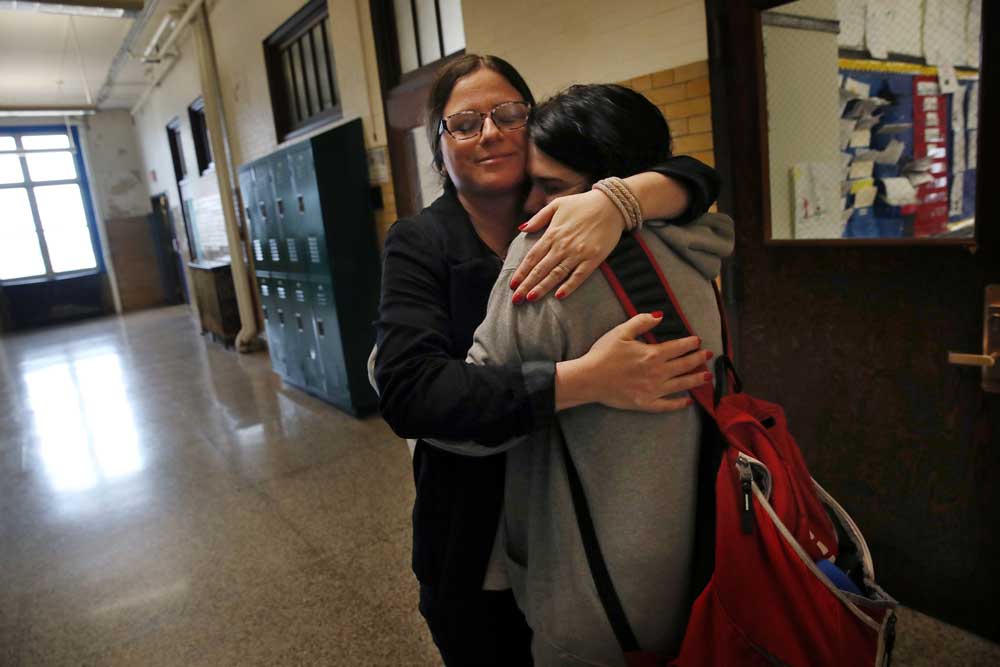To achieve safe schools, mental health resources are key
By Amy Briesch and Sandra M. Chafouleas
Whenever a mass shooting takes place in schools, the public debate often focuses on the laws or policies that could have prevented the tragedy. But preventing school violence requires more than a gun policy. This requires both crisis prevention and response that takes into account the emotional well-being of students – not just their physical safety.
Preventing school violence also requires professionals — counselors, psychologists, and social workers — who know how to create an emotionally safe environment, which research shows is essential to safe schools. Unfortunately, statistics show that there is a critical shortage of such employees. Staffing shortages have become a major obstacle to creating emotionally safe schools for children.
As school psychology teachers who train future school psychologists, we know that school counselors, psychologists and social workers are in short supply. Although school shootings have led to an increase in the hiring of police officers to serve in schools, the hiring of school mental health experts has not kept pace. Demand is outstripping supply, a trend that is expected to continue for years to come.
Staff issues
The employment of school counselors is expected to increase by 11% over the next decade. However, there are not enough trained professionals to fill the positions. Current ratios are already double what they should be, with one school counselor per 464 students and one school psychologist per 1,200 students. These ratios are even higher in schools where most students are members of ethnic or racial minorities.
Better-staffed schools are more likely to use preventative and restorative approaches to student violence—those that aim to educate, rather than those that simply aim to punish. In understaffed schools, providers are only managing to deal with emergencies, rather than doing the preventative work needed to make schools safer and more efficient.
Key prevention and restoration activities aimed at promoting emotionally safe environments include:
- Promote connected communities: Research has found that when students feel more comfortable at school and feel like they belong, they are less likely to engage in aggressive behavior at school, even when they have been the victim of violence. at home. Key activities such as group decision-making, teamwork and conflict resolution – often led by teachers with support from school mental health staff – can help build this kind of community.
- Teaching social-emotional skills: School mental health professionals can help ensure that all students learn strategies to identify their feelings, calm themselves, and connect with others. Students with these skills not only have fewer conduct problems and less emotional distress in school, but also get better grades. Most states, however, do not require schools to teach these skills to all students.
- Intervene early: Schools are in a unique position to provide proactive supports when the data suggests a widespread need. For example, rates of anxiety and depression among young people have doubled since the start of the pandemic, so that up to 20% of students in a class can be affected. Targeted therapeutic supports delivered in small groups by school mental health staff can help prevent the development of future disorders.
- Provide accessible mental health support: Schools can be a primary source of mental health support for youth in crisis. This includes both the provision of direct services at school and the coordination of care with community providers. For many students, especially students of color and those with fewer financial resources, school may be the only accessible way to receive mental health treatment.
Preparation of school personnel
Even before the COVID-19 pandemic, and far more severely since it began, schools struggled to provide enough mental health support to students due to insufficient staff.
Several federal bills seek to increase the number of mental health workers in schools. A bill would help expand the pipeline by subsidizing the cost of graduate training for those who commit to work in the schools. Another would provide grants directly to schools to fund additional positions in schools. However, experts predict that the two bills only have a 3% chance of being passed by Congress.
Amy Briesch is an associate professor of school psychology at Northeastern University. Sandra M. Chafouleas is a professor of educational psychology at the University of Connecticut.
The Conversation was born out of deep concern about the diminishing quality of our public discourse and recognition of the vital role that academic experts could play in the public arena. Information has always been essential to democracy. It is a social good, like drinking water. But many now find it hard to trust the media and experts who have spent years researching a topic. Instead, they listen to those with the loudest voices. These uninformed views are amplified by social media that rewards those who spark outrage instead of thoughtful insight or discussion. The Conversation seeks to be part of the solution to this problem, to bring the voices of real experts to the table and make their knowledge available to everyone. The Conversation publishes nightly at 9 p.m. on FlaglerLive.


Comments are closed.